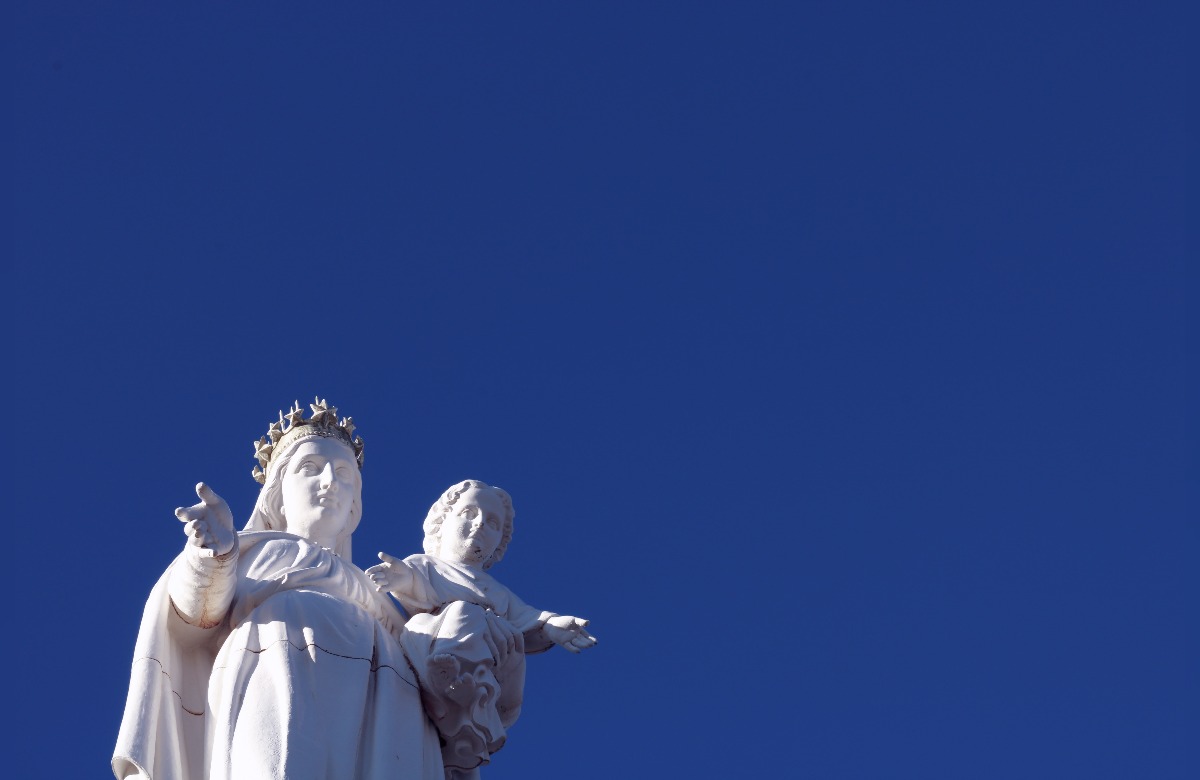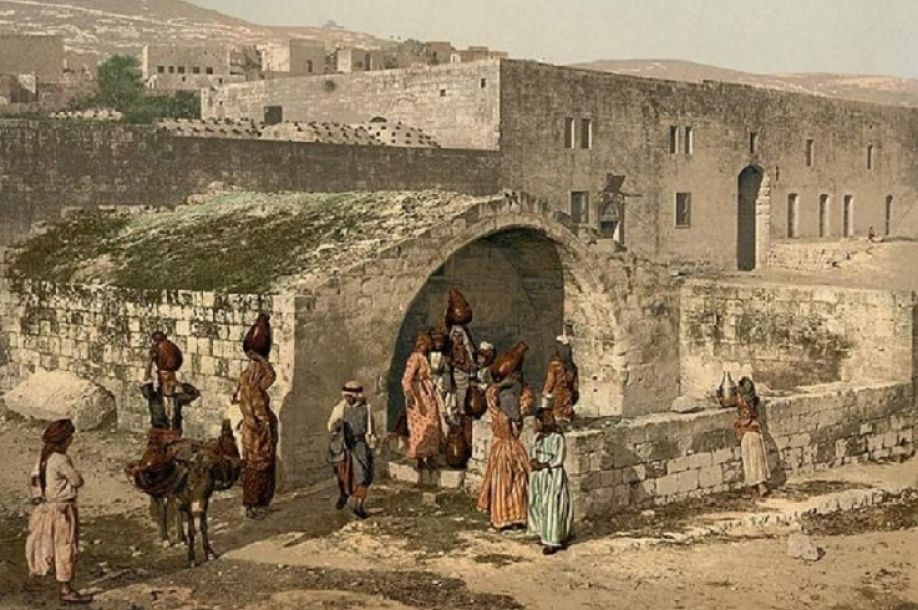
St. Luke says in his Gospel that the angel Gabriel was sent by God to Nazareth (cf. Lk 1:26), to a virgin named Mary, to announce to her that she was to be the mother of the Messiah, the Savior, whom all the Jews were awaiting.
About two thousand years ago Nazareth was a village unknown to almost everyone on earth. At that time imperial Rome was shining with splendor. There were many prosperous cities on the shores of the Mediterranean. The bustle of merchants and sailors flooded many streets and squares of port cities or commercial emporiums. Nazareth, on the other hand, was a handful of poor houses perched on rocky promontories in Lower Galilee. Even in its region it was of no great importance.
A little more than two hours' walk away was the city of Sepphoris, where most of the commercial activity in the area was concentrated. It was a prosperous city, with rich constructions and a certain cultural level. Its inhabitants spoke Greek and had good relations with the Greek-Latin intellectual world. On the other hand, in Nazareth lived a few Jewish families, who spoke Aramaic.
Most of the inhabitants were dedicated to agriculture and cattle raising, but there was also a craftsman like José, who with his ingenuity and effort rendered a good service to his fellow citizens by doing carpentry and blacksmith work.
Maria's house was modest, like her neighbors'. It had two rooms. The inner room was a cave that served as a barn and pantry. Three adobe or masonry walls attached to the rock in front of that inner room supported a framework of branches, wood and leaves that served as a roof, and formed the outer room of the house. Light came in through the door.
There they had a few working tools and little furniture. Much of the family life was done outside, at the door of the house, perhaps in the shade of a vine that would help temper the summer heat.
Almost all of its neighbors had a similar house. Archaeological excavations have brought to light part of ancient Nazareth. The houses took advantage of the numerous caves in the terrain and were fitted out in them without making many modifications, such as cellars, silos or cisterns.
The floor was flattened a little in front of the cave, and that enclosure was enclosed by elemental walls. Possibly the families would use the floor of that room for sleeping.

The day began with the sunrise. A simple prayer, such as the Shema, and then the hard work began. The Shema is a prayer, taken from the Bible, which begins in Hebrew with that word, and goes like this: "Shema Israel (Hear O Israel), the Lord our God is one Lord. You shall love the Lord your God with all your heart and with all your soul and with all your strength.
Keep in your heart these words that I say to you today. Inculcate them in your children and speak them to them when you are at home or on your travels, lying down or standing up. Bind them on your hand as a sign, put them on your forehead as a sign. Write them on the doorposts of your house and on your doors" (Dt 6:4-9).
One of the first tasks to be performed each day, after prayer, was the preparation of bread, the basic food for each day. To do this, Mary, as the women used to do, would begin by grinding the wheat or barley grain to make flour. Some domestic stone mills from the time of our Lord have been found that were used for this task.
Then the flour was mixed with water and a little salt to form the dough, to which was added -except during the feast of Easter- a pinch of yeast. With the fermented dough, very thin cakes or rolls were made, which were baked in the oven or buried in embers, and eaten freshly baked.
The daily meal would be quite similar to what we know today in the Mediterranean regions. The bread was broken by hand, without using a knife, and was eaten alone or with oil, and accompanied by wine, milk, fruit, and when possible by some meat or fish. Milk was usually kept in wineskins made of sewn goat skins, and was drunk directly from them.
It is most likely that it was almost always acidic when drunk. Milk was also used to make butter and cheese, which were staple foods where there were livestock, as in Galilee.
Nazareth, of our Mother the Virgin Mary at the beginning of the 20th century.Another important element in the diet of those people was oil. Olives preserved in brine were also consumed. The oil was even taken with them when they went on a trip, in flat clay bottles similar to a canteen. It was also common to drink wine, which was usually strong, and for that reason it was usually drunk with water, and sometimes mixed with some spices, or sweetened with honey.
Among the most common stews were those of chickpeas or lentils. The most popular vegetables were broad beans, peas, leeks, onions, garlic and cucumbers. The most commonly eaten meat was lamb or goat, and some chicken. The most common fruits were figs, dates, watermelons and pomegranates. Oranges, so abundant today in that area, were not yet known in the Galilee where St. Mary lived. Santa Maria.
Before eating each day, prayers were recited to thank God for the food received from his goodness. The blessing of the table was done more or less in these terms: "Blessed are you, Lord, our God, King of the Universe, who has given us this day to eat bread, the fruit of the earth". And the response was: Amen.
To meet the needs of the household, one hard job that had to be done every day was the carrying of water. The spring at Nazareth was some distance away, a little more than fifteen minutes' walk from the houses in the village. Possibly Mary would go there each morning to fill her pitcher, and return home carrying it on her head, as is the custom in the area, to continue her work. And some days she might have to return to the vicinity at other times of the day to wash clothes.
The clothes that Mary would have to wash would be those worn by her, Joseph and Jesus. The usual garment was composed of an inner dress or tunic, wide, which was usually made of linen. It fell to the knees or calves. It could be sleeveless or with sleeves up to mid-arm.
The tunic was tight to the body with a kind of girdle, made with a long and wide strip of linen, which was wrapped several times around the body, but not always adjusted in a smooth way, but in some of these laps folds were formed, which could be used to carry the money. Over the tunic was worn the outer garment, or mantle, of square or rounded shape, which was usually made of wool.
Most of Maria's days were, without a doubt, completely normal. She spent many hours on household chores: preparing food, cleaning the house and clothes, and even going about weaving the wool or linen and making the necessary clothing for her family.
She would arrive exhausted at the end of the day, but with the joy of one who knows that such seemingly simple tasks have a wonderful supernatural efficacy, and that by doing her work well she was performing a task of the first magnitude in the
Francisco Varo PinedaDirector of Research at the School of Theology of the University of Navarra.
Professor of Sacred Scripture.